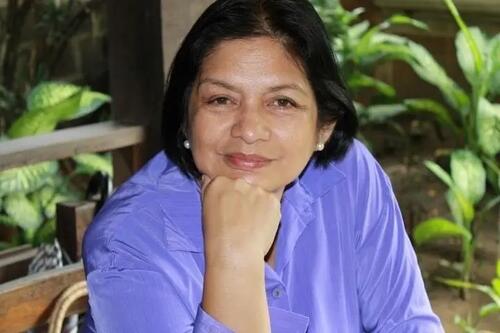Nelia Sancho & American Transnational College Activism

Nelia Sancho & American Transnational College Activism
On September 11, 2023, The New York Times published an obituary for Nelia Sancho, the Filipina beauty queen who left her pageant career to become an activist. She died at age 71 on September 1st, 2022, after dedicating her life to fighting human rights abuses and advocating for women’s causes. Sancho was a dissident: she variously spoke up against Ferdinand Marcos’s brutal dictatorship, served as a chief financial officer of the Communist Party of the Philippines, and as a founder of the Gabriela Women’s Party national organization network (which to this day represents Filipinas in the House of Representatives). The Filipino news media called Sancho a “guerrilla queen.”
Nelia Sancho in her pageant days.
Source: https://www.nytimes.com/2023/09/11/world/asia/nelia-sancho-dead.html
In college at the University of the Philippines, Sancho was a member of the Sigma Delta Phi sorority when she started entering beauty pageants. She became so successful that she took a gap year from school to compete for the Philippines across Asia. During her travels, Sancho encountered an Australian diplomat who said she was being exploited, because “the Philippine government was leveraging her polished beauty-queen persona as propaganda to distract the world from its human rights violations.”
In his recent book The Student (Yale University Press, 2023) Michael S. Roth, President of Wesleyan University, says there is “a long history of student protest in” America and “today’s demands from students for greater diversity and inclusion (…) fall within that tradition.” Young people in the United States now are getting “accused of being censorious, illiberal and careerist — as well as ‘woke.’ This is all part of the long, cliche-ridden history of accusing the young of failing to live up to an older generation’s idea of the student.” And while Roth addresses the U.S. context in The Student, the kinds of college protests that he references are not just an American phenomenon. Indeed, we can draw a connection between Roth’s argument about American colleges and Sancho’s life, because she was a college activist, but also because she attended the University of the Philippines: an American-style university, founded by the U.S. colonial government in 1908. She became involved in activism as a member of the American Sigma Delta Phi sorority.
Nelia Sancho, later in life.
Source: https://www.nytimes.com/2023/09/11/world/asia/nelia-sancho-dead.html.
We can compare infrastructural and educational milieu that surrounded Sancho as a budding activist to college environments in the United States. For example, only a decade after Sancho protested against the Marcos government at the University of the Philippines, students at my own institution – Yale University – started pitching and camping under 24/7 anti-apartheid protest tents in public spaces. In some ways, too, Yale may be just as post-colonial as the University of the Philippines: it is named after its earliest major benefactor, Elihu Yale, who made his fortune as a highly-ranked official of the British East India Company in colonial Madras.
Yale Student anti-apartheid protest in the 1980s.